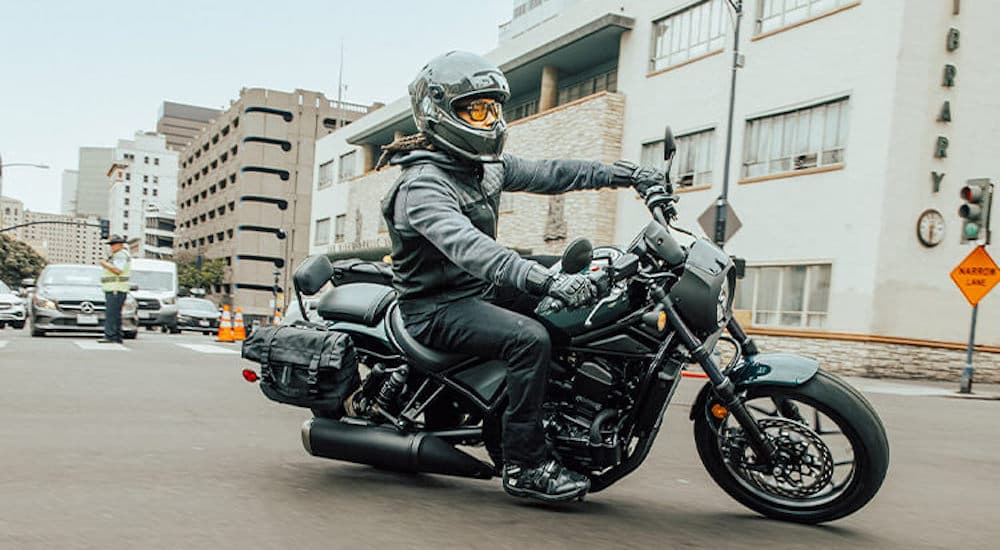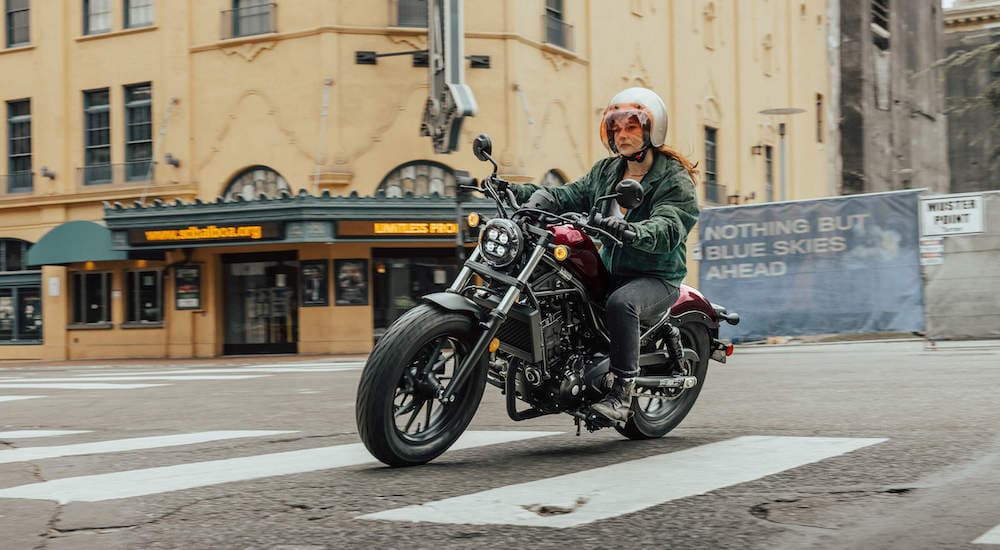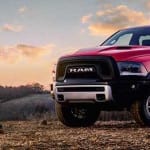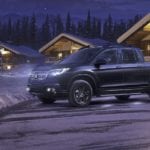It’s 1985 in America, and a young basketball player named Michael Jordan is named the NBA “Rookie of the Year,” Madonna turns heads with her hit single, “Like a Virgin,” and a film called Back to the Future takes box offices by storm as Marty McFly and Dr. Emmett Brown travel through time in a DeLorean. It was also a significant year for the motorcycle industry, particularly for Honda. The Japanese manufacturer set out to attract new riders to its lineup with an affordable lightweight cruiser called the Rebel.
The Rebel made a lasting impression and exceeded every expectation, building its reputation as the bike for new riders honing their skills in the saddle. Its well-crafted design, capable engine, and dynamic performance left the Rebel 250 relatively unchanged for decades, although Honda has added more powerful and capable models to the Rebel family over the years. The continued growth of the Rebel family and the bike’s charming characteristics add to its appeal and make it one of the most sought-after used Honda motorcycles for sale.
The Rebel’s popularity is even greater today after Honda replaced the original Rebel 250 with the Rebel 300 and Rebel 500 in America in 2016. With Honda recently suspending orders for the Rebel due to supply chain and logistical issues, demand for used models will likely skyrocket. That demand and the Rebel’s impressive trajectory in the Honda lineup leaves us to explore just how much the bike has evolved over the years and how Honda has capitalized on the Rebel name with models like the Rebel 300, the Rebel 500, and the awe-inspiring Rebel 1100.
The Original Rebel 250
Honda debuted the Rebel 250, also known as the CMX 250, in 1985 with one goal: to introduce a younger audience, known then as “the MTV generation,” to riding. To accomplish its mission, Honda had to design a bike that wasn’t intimidating, overpowering, or heavy. This balance was critical because, without it, the Rebel would leave inexperienced riders discouraged and, perhaps, averse to the Honda lineup. Fortunately, Honda got it right.
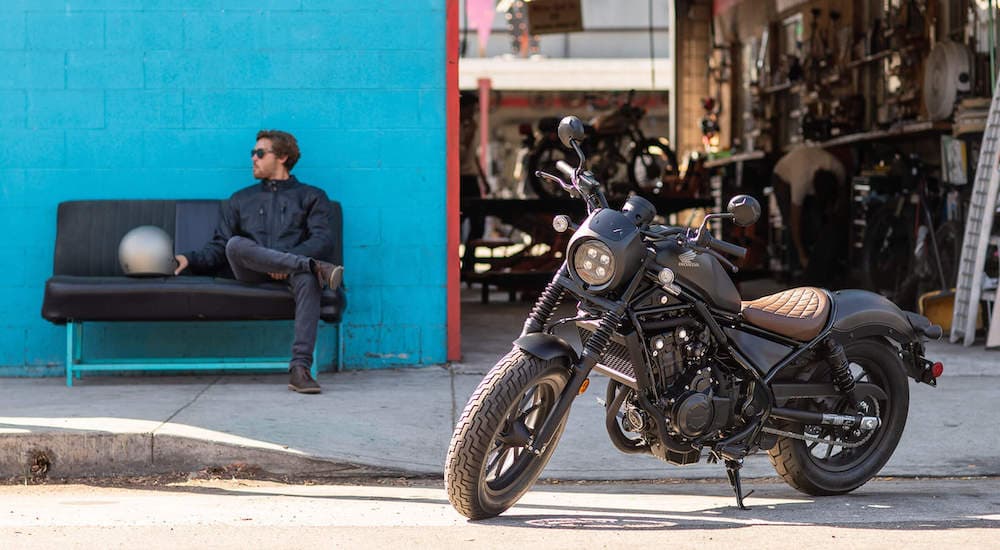
The Rebel earned instant acclaim for its cruiser design and parallel-twin engine, two characteristics that remained unchanged throughout its history in Honda’s American lineup. The Rebel 250’s compact parallel-twin engine differentiates the bike in a segment inundated with heavy V-twins. With the Rebel, you’re not expecting jaw-dropping power but stability and responsiveness. The bike answers those needs, quickly climbing to highway speeds without compromising its balance or poise because of its incredible weight distribution and a wet weight that’s barely over 300 lbs.
The Rebel’s engine layout contributes to its stability, making it more appealing to young riders as they hone their skills in the saddle. However, Honda didn’t stop there and targeted best-in-class efficiency to give the Rebel another advantage over the competition. Throughout most of its run, the Rebel 250 boasted the best fuel economy in the segment, averaging up to 62 MPG. This exceptional fuel economy meant spending less on fuel, a critical factor for young riders investing in a new hobby.
Continuing the Tradition With the Rebel 300 and Rebel 500
Honda discontinued the Rebel 250 in America in 2016, replacing it with the more powerful Rebel 300 and Rebel 500. The models debuted in 2017 with the same mission: to appeal to the “imagination of a younger generation of riders.” Using the Rebel 250 as inspiration, the new Rebel models paid homage to their predecessor but added a modern twist with improved performance, contemporary design details, and more options for customization.
Slightly larger than the Rebel 250, the Rebel 300 is powered by a torquey 286cc single-cylinder engine that earns it a stellar reputation among new riders. The Rebel 500 adds more capability with its 471cc engine, positioning the bike as a stepping stone for riders seeking something powerful but not overwhelming. Beyond these defining characteristics, the Rebel 300 and Rebel 500 share many similarities, from their retro-future designs to their sleek silhouettes, low weights, and low seat heights, making them incredibly capable and sturdy.
Breaking the Mold With the Rebel 1100
Since its introduction in the mid-1980s, the Rebel name has always been tied to entry-level bikes designed for new riders. Honda has capitalized on this reputation with models like the Rebel 300 and Rebel 500. However, the manufacturer refused to stop there and turned its attention to a new audience of riders looking for a larger bike for longer-distance rides. The Rebel 1100 was born.
Since its debut in 2020, the Rebel 1100 has lived up to the Rebel name, turning heads with its innovative and accessible design. What do I mean? As Forbes puts it, the Rebel 1100 is for the person who’s always wanted to ride a motorcycle but has always had an excuse, like not knowing how to operate a manual transmission or not being able to control a heavy bike. Just as the Rebel 250 achieved an incredible balance to accommodate new riders, the Rebel 1100 achieves a unique balance of its own.
The newest entry into the Rebel family takes the nimbleness of the Rebel name to the highway and makes cross-country adventures possible. As a medium-weight cruiser, the Rebel 1100 has everything you need, from a capable engine to the necessary comforts and technology to travel long distances without worry. More importantly, it reduces the steep learning curve that often comes with riding, offering Honda’s dual-clutch automatic transmission that makes it as easy to operate as a scooter. There’s no need to engage the clutch and shift gears because the Rebel 1100 does the work for you.
Where the Rebel 250, Rebel 300, and Rebel 500 lack the sophistication expected of a larger bike, the Rebel 1100 answers those demands. It offers a relaxed riding position, sport-like handling, and a sleek design with an impressive weight of just around 500 lbs. While that is noticeably heavier than the other Rebel models, it’s nothing compared to the notoriously heavy hogs in the Harley-Davidson lineup. The new Rebel 1100T model goes a step further, adding saddlebags and transforming the accessible cruiser into a reliable travel companion for longer roadtrips.
The Legend of Rebellion Continues
Honda has transformed how we get from Point A to Point B since it introduced its first motorcycle to America in the 1950s. Since then, the manufacturer has positioned itself as an industry leader, dominating multiple segments with legendary bikes like the Gold Wing, Fireblade, and Africa Twin. In addition, Honda has actively broadened its customer base by introducing entry-level models like the Rebel 250, showing new riders the joys of chasing the horizon from the saddle of a Honda.
While the Rebel 250 is one of the most respected bikes in Honda history, it’s also one of the most sought-after bikes on the used lot. It is incredibly affordable and reliable, and its lightweight design makes it the perfect starter bike for new riders as they hone their skills. Fortunately, the Rebel 250 isn’t alone in its quest to welcome more riders into the community, with Honda expanding the Rebel family one model at a time with the Rebel 300, Rebel 500, and Rebel 1100.
